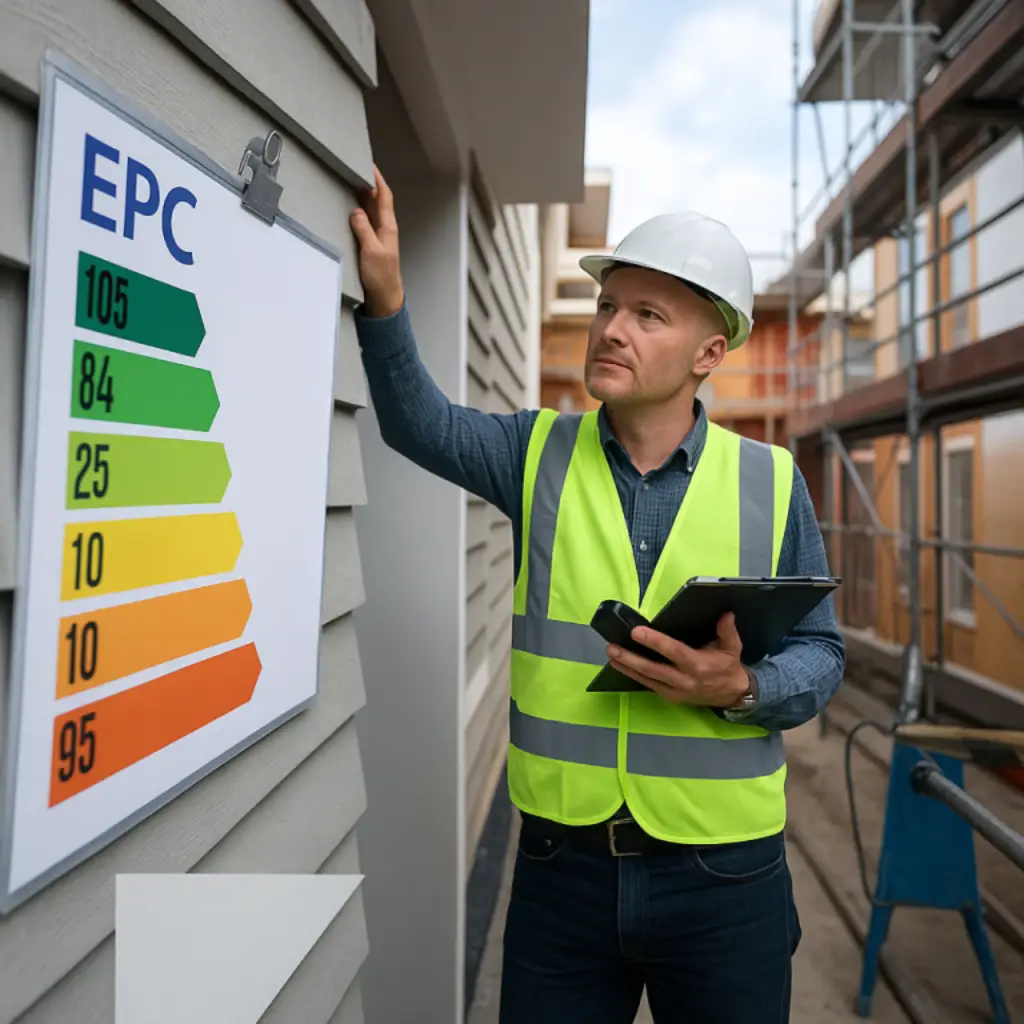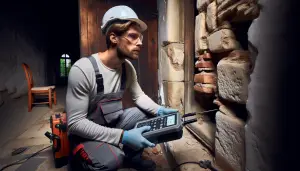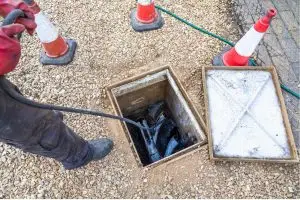What is an EPC and Why Do New Builds Need One?
When you start building a new home in the UK, one of the essential documents you’ll need before handing over the keys is an Energy Performance Certificate, also known as an EPC for New Builds. An EPC is a short report that tells you how energy efficient your home is. It’s rated on a scale from A to G, with A being the most efficient and G being the least.
We know that when building a house, energy use might be the last thing on your mind. But with building regulations like Part L asking homes to meet higher standards, an EPC becomes much more than just paperwork. It confirms that your new build is designed to use less energy, helping to keep bills lower and our planet greener.
For all new builds, an EPC is a legal requirement. It’s based on a full assessment of factors like insulation, heating, ventilation, lighting, and even the type of windows used. Each of these details contributes to a better-performing property overall.
The Link Between SAP Calculations and EPCs
To put it simply, you can’t get an EPC for a new build without first completing something called a SAP calculation. Short for Standard Assessment Procedure, SAP is the UK Government’s method for measuring the energy rating of residential properties. Think of it like a maths test for your home’s energy use.
SAP calculations consider how much energy a home is likely to use based on the construction methods and materials. This includes things like wall thickness, heating systems and even the type of light bulbs planned. If your SAP results meet government standards, you’ll receive what’s called a Predicted Energy Assessment. This leads to the full EPC once construction is finished.
At Ratio Seven, we carry out SAP calculations for new builds that help builders meet legal and environmental requirements, ensuring a smoother pathway to getting the EPC issued on time.
Benefits of Having a Good EPC Rating
Getting an EPC isn’t just ticking a box to satisfy the law. A good EPC rating shows that your home has low running costs and is built with energy-saving techniques in mind. This is appealing for any potential owner and reduces monthly bills from day one.
Let’s break it down:
- A property rated A or B will need less heating and electricity from outside sources.
- The home may stay warm in winter and cool in summer with less energy used.
- A better rating can make resale easier, as homebuyers are keen on lower bills and sustainable living.
Many banks also pay attention to EPC ratings. Some offer green mortgages, which reward buyers of eco-conscious homes with better rates or cashback offers.
Building Regulations and EPC Requirements
All new homes in the UK must comply with Part L of the Building Regulations. This section lays out how you should build homes to use less fuel and power. The EPC is the final confirmation that your home matches those rules.
For new builds:
- The EPC must be produced before the property is marketed or occupied.
- It must be lodged on the central EPC Register.
- The certificate is valid for 10 years.
Without one, you could face delays or legal issues when trying to sell or rent your property.
We work with developers across the country to handle these steps smoothly. At Ratio Seven, we make sure homes meet SAP and EPC targets without last-minute surprises.
Steps to Get an EPC for Your New Build
You may be wondering how the whole process works. Here’s a breakdown of the steps we follow to get your EPC sorted:
- We carry out SAP calculations using your building plans and material specifications.
- From there, we issue a Predicted Energy Assessment to include in any planning or development paperwork.
- Once your build is complete, we perform a final check of the home (this might include an air test and checking completed insulation details).
- We then submit the final SAP results and log the EPC through the Government’s official register.
- You receive your EPC document, which can be shared with potential buyers or kept for your files.
Everything is digitally handled, and we’re always here to explain what any part of the report means.

What’s Included in an EPC?
The EPC document isn’t just a single letter grade. It contains a summary of useful details about how the property performs and where it can improve. Everything is laid out in a standard format to make comparisons easy between homes.
You’ll find:
- The home’s current and potential rating
- Carbon dioxide emissions and savings potential
- Suggestions for improving the rating (like adding more insulation or upgrading the boiler)
- Estimated energy use over a year, including heating, hot water and lighting
It’s a good way of seeing how the home will behave once people start living in it.
Common Pitfalls to Avoid
The road to getting a good EPC isn’t always smooth, and some builders are caught out by it. Some common issues that can result in a poor rating or delay in getting your EPC, include:
- Using different materials without updating the SAP model
- Skipping the air pressure test, leading to missing data in the final certificate
- Trying to pass a SAP calculation without proper insulation or an appropriate heating system
We help avoid all of this by getting involved early in the process. With the right data up front and communication with your architect or construction team, we guide you through every step, so there are no nasty surprises at the end.
If mistakes are made, the fix can be expensive, like having to redo walls or ceilings to meet insulation targets. That’s why we always advise doing everything correctly from the beginning.
FAQs
Do I need an EPC before my new build is finished?
Not the full EPC, but you can get a Predicted Energy Assessment using SAP results to show your home’s expected performance.
How long does it take to get an EPC?
Once the final inspection and air test are complete, it usually takes a few days to complete and lodge the certificate.
What happens if my EPC rating is too low?
If the rating does not meet regulations, you might be required to make improvements before the property can be sold or let. Early planning helps avoid this.
Is there a way to improve my EPC rating during the build?
Yes. This includes using energy-efficient windows, more insulation, or better heating systems. We often suggest changes during the SAP stage, so ratings improve before anything is even built.
How much does an EPC cost for a self-build home?
Costs vary depending on property size and location. We provide full quotes quickly so you know what to expect.
Working with Ratio Seven
At Ratio Seven, our job is to guide you through every part of the SAP and EPC process. From reviewing your building plans to issuing the final certificate, we keep things simple and clear.
Many of the homes we review meet their energy goals with just a few design changes recommended at the start. Our advice not only meets regulatory standards but can lower the living costs for whoever buys or rents your home.
We’re happy to work with individual self-builders or nationwide developers alike, and we welcome questions from anyone looking to better understand what’s involved. We aim to help you build smart, safe homes that meet all current expectations without over-complicating things.
Build Smart from the Start: Get Help with Your New Build EPC
Getting an EPC for your new build isn’t just a legal step; it gives you clear proof that your home is built to modern standards that help reduce energy use and keep bills lower. From SAP calculations to final inspections, everything has to come together smoothly. Instead of facing confusion or delays, get the support you need early on.
Contact Ratio Seven today to discuss SAP calculations or EPCs for your new build and take the first step towards smoother construction and certification. We help builders meet the requirements with less stress and more confidence.




